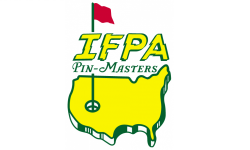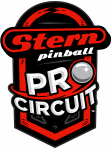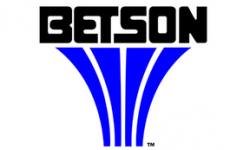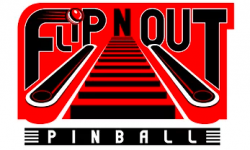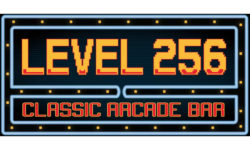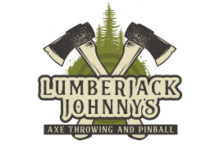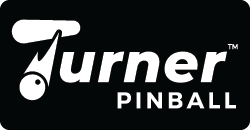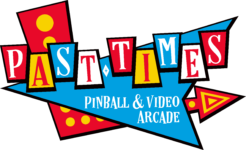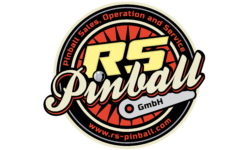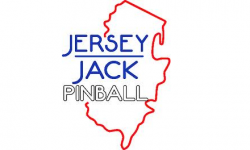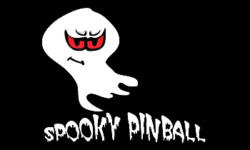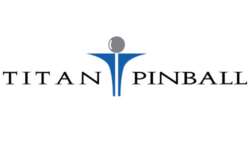Official Rules [last updated 12/24/14]
IFPA11 is the World Pinball Championship event operated by the International Flipper Pinball Association (IFPA). This document specifies the official operating rules and regulations of the event.
The event coordinators for IFPA11 are Josh Sharpe, Zach Sharpe, Roger Sharpe, Steven Epstein and Brian Woodard. Event coordinators organize volunteers, designate scorekeepers, handle malfunctions and rulings, delegate responsibilities and authority, and otherwise work to ensure the smooth operation of the tournament. Event coordinators and designated officials are not excluded from tournament play but will be recused from any situation that directly affects their actual or potential standing as a player.
I. Quick Overview
IFPA tournament rules are quite lengthy and detailed. They reflect the experience of many years of tournament and league play, under many different systems. Many of the rules are based on rules used by the Professional and Amateur Pinball Association (PAPA). The underlying ideas are simple, however.
The tournament consists of 8 sessions of qualifying rounds. During each session, players play against each other in three 4-player games. Players earn points based on their finishing positions, with the top 32 players advancing to the final rounds.
In the final rounds, qualifying players play against each other in head-to-head single elimination matches until a winner is determined.
II. Competition Details
1. How to qualify
Unlike most tournaments where the qualification process takes place over a couple of days at the tournament site, qualifying for IFPA11 is based on results from all the IFPA endorsed tournaments held over the past 3 years. Utilizing its World Pinball Player Rankings, the IFPA has used the January 1st, 2014 rankings to determine the qualifiers for IFPA11. The tournament field will consist of 64 players. The top 2 ranked players from each eligible country as of 1/1/2014 will receive an automatic qualifying spot into the tournament. Should either of the top 2 players not be able to attend, that country exemption will move down the country ranking list until it is filled. The rest of the field will be made up of the most highly ranked players from the WPPR list. For players that cannot attend, spots will be filled by going down the rankings list.
Additionally, 1 of the 64 spots will be made available at the 2014 IFPA Satellite Event, which will be at the 2014 Lyons Spring Classic, held the weekend prior to IFPA11. This satellite event will be open for any player ranked in the World Pinball Player Rankings as of the end of 2013, but did not qualify for IFPA11 through the automatic bid process. Contact the IFPA for these details.
2. Fees
A one time entry fee of US$250 per player is to be prepaid prior to the event. US$50 from each entry will go to the IFPA host, to be put towards tournament expenses, with the remainder being paid back as cash prizes. Once registration is open, there will be a 2 week period of ‘Early Registration’ where players can pay a discounted entry fee of US$230.
3. Prizes
The tournament features a guaranteed package of cash prizes. Additional tournament expenses on top of the US$50 per entry are recouped through sponsorship dollars. In the event of an overrun beyond expenses, tournament revenue will be retained to finance the next IFPA event. In the event IFPA discontinues its events or is disbanded, any such retained revenue will be donated to charity.
The guaranteed prize package is as follows:
|
1st Place |
$1000 + NIB Stern game |
plus trophy! |
|
2nd Place |
$2500 |
plus trophy! |
|
3rd Place |
$1500 |
plus trophy! |
|
4th Place |
$1000 |
plus trophy! |
|
5th Place |
$900 |
|
|
6th Place |
$800 |
|
|
7th Place |
$700 |
|
|
8th Place |
$600 |
|
|
9th-16th Place |
$300 each |
|
In addition, the top qualifier following the 8 sessions will receive a $200 cash prize.
The winner of IFPA11 will also receive the title “World Pinball Champion”.
Other non-cash prizes may be awarded for special competitions, door prizes, top scores on practice machines, etc, at the sole discretion of tournament officials.
III. Qualifying Sessions
1. Original groupings for Session #1
Once all participants are finalized, the 64 players will be ranked by their World Pinball Player Rankings standing as of 1/1/12. The field will be divided into 16 groups of 4 players.
Initial groups for Session #1 will be as follows:
Group 1: 1-32-33-64, Group 2: 2-31-34-63, Group 3: 3-30-35-62, Group 4: 4-29-36-61, Group 5: 5-28-37-60, Group 6: 6-27-38-59, Group 7: 7-26-39-58, Group 8: 8-25-40-57, Group 9: 9-24-41-56, Group 10: 10-23-42-55, Group 11: 11-22-43-54, Group 12: 12-21-44-53, Group 13: 13-20-45-52, Group 14: 14-19-46-51, Group 15: 15-18-47-50, Group 16: 16-17-48-49
2. Playing a session
Each group will be assigned 3 games at random (1 ‘OLD’, 1 ’MID’ and 1 ‘NEW’).
Groups will play from OLD to MID to NEW except when there is a conflict of multiple groups being put on the same machine. Should this occur, every effort will be made to shift lower groups first to a different game order, however, to best ensure that players do not replay games more than absolutely necessary any group has the chance of not playing in the order of OLD to MID to NEW. The scoresheets will show the proper order of how the games should be played from top to bottom.
Each player will have the opportunity for 30 seconds of practice time before starting every game of every session. If you are in a session with an Epstein Cup competitor that played on one of the three machines chosen in that session, the other players in the group will get up to 1 complete game of practice if they choose, rather than just 30 seconds of practice before the tournament game starts.
Choice of position for game 1 will go to the highest seeded player within that group based on the standings entering that session, second choice will go to the 2nd highest seeded player, third choice will go to the 3rd highest seeded player and the lowest seeded player will have the remaining choice. Please note that players do not need to announce their desired position choice until after a game has been selected if they prefer.
In subsequent games, the player finishing in 4th place will have choice of position for Game 2. The player finishing in 3rd place will have 2nd choice of position. The player finishing in 2nd place will have 3rd choice of position. The player finishing in 1st place will have the remaining position.
3. Scoring
The rank of the player’s result on each machine awards the following amount of points. These points are cumulative over all 8 sessions when the finalists are determined.
|
Rank |
Score |
|
1st place |
7 points |
|
2nd place |
5 points |
|
3rd place |
3 points |
|
4th place |
1 point |
In the unlikely event of two or more scores on a machine being tied, an average point value of the tied positions will be awarded for each tied score. For example, a tie for 2nd place would earn each player 4 points.
In the unlikely event that someone drops out of the tournament during the qualifying sessions, and a 3 person group is formed, scoring for that group will be 7 points for first place, 4 points for second place and 1 point for third place. 3 person groups will be formed based on where the missing players would have been grouped. Should 4 players drop out, we will instead form 15 groups of 4 rather than 12 groups of 4 and 4 groups of 3.
Tournament officials will endeavor to provide up-to-date scores and rankings at all times, using a projected screen. The up-to-date scores and rankings will also be available on the http://www.ifpapinball.com/ Web site following each session.
4. Regrouping for Session #2 through Session #8
After Session #1 players will be ranked according to their first session scores. For session #2 through session #8 the groupings will be done according to the most up to date standings entering that particular session.
Session #2 (same breakdown as Session #1):
Group 1: 1-32-33-64, Group 2: 2-31-34-63, Group 3: 3-30-35-62, Group 4: 4-29-36-61, Group 5: 5-28-37-60, Group 6: 6-27-38-59, Group 7: 7-26-39-58, Group 8: 8-25-40-57, Group 9: 9-24-41-56, Group 10: 10-23-42-55, Group 11: 11-22-43-54, Group 12: 12-21-44-53, Group 13: 13-20-45-52, Group 14: 14-19-46-51, Group 15: 15-18-47-50, Group 16: 16-17-48-49
Session #3 & 4:
Group 1: 1-16-17-32, Group 2: 2-15-18-31, Group 3: 3-14-19-30, Group 4:4-13-20-29, Group 5: 5-12-21-28, Group 6: 6-11-22-27, Group 7: 7-10-23-26, Group 8: 8-9-24-25, Group 9: 33-48-49-64, Group 10: 34-47-50-63, Group 11: 35-46-51-62, Group 12: 36-45-52-61, Group 13: 37-44-53-60, Group 14: 38-43-54-59, Group 15: 39-42-55-58, Group 16: 40-41-56-57
Session #5 & #6:
Group 1: 1-8-9-16, Group 2: 2-7-10-15, Group 3: 3-6-11-14, Group 4: 4-5-12-13, Group 5: 17-24-25-32, Group 6: 18-23-26-31, Group 7: 19-22-27-30, Group 8: 20-21-28-29, Group 9: 33-40-41-48, Group 10: 34-39-42-47, Group 11: 35-38-43-46, Group 12: 36-37-44-45, Group 13: 49-56-57-64, Group 14: 50-55-58-63, Group 15: 51-54-59-62, Group 16: 52-53-60-61
Session #7:
Group 1: 1-4-5-8, Group 2: 2-3-6-7, Group 3: 9-12-13-16, Group 4: 10-11-14-15, Group 5: 17-20-21-24, Group 6: 18-19-22-23, Group 7: 25-28-29-32, Group 8: 26-27-30-31, Group 9: 33-36-37-40, Group 10: 34-35-38-39, Group 11: 41-44-45-48, Group 12: 42-43-46-47, Group 13: 49-52-53-56, Group 14: 50-51-54-55, Group 15: 57-60-61-64, Group 16: 58-59-62-63
Session #8:
Group 1: 1-2-3-4, Group 2: 5-6-7-8, Group 3: 9-10-11-12, Group 4: 13-14-15-16, Group 5: 17-18-19-20, Group 6: 21-22-23-24, Group 7: 25-26-27-28, Group 8: 29-30-31-32, Group 9: 33-34-35-36, Group 10: 37-38-39-40, Group 11: 41-42-43-44, Group 12: 45-46-47-48, Group 13: 49-50-51-52, Group 14: 53-54-55-56, Group 15: 57-58-59-60, Group 16: 61-62-63-64
In the case of players that are tied in total points after a given session, those players will be randomly placed in the different tied positions available.
IV. Final Rounds
1. Advancing to Finals
When all 8 sessions of the qualifying round have been completed, a final calculation of standings will be tabulated. Those scores will be ranked, and the top 32 players will advance to the final rounds.
In the event a qualifying player is not available, he or she will be skipped in the ranking as if he or she had not qualified. Upon discovering that a player is not present, tournament officials will make a specific announcement for that player, allowing at least ten minutes but no more than twenty minutes, for that player to appear. Substitutions or late arrivals are not allowed.
In the event that two or more players are tied on either the qualifying bubble or a potential bye, such that not all of the tied players can advance to the final rounds or receive the bye, a tiebreaking procedure will be utilized. A single game will be played on a machine randomly selected by tournament officials from the qualifying bank of games. Tournament officials will draw one ‘OLD’, one ’MID’ and one ’NEW’ machine at random.
The players tied on the qualifying/bye bubble will be asked to vote by secret ballot for which game they would like to play. The game with the most votes will be the game used for the tie-breaker game. If two or three machines receive the same number of votes, the players will vote again from the machines that are tied from the original voting. If after the second round of voting there is still a tie, the game will be chosen at random from those three by tournament officials. The tied players will play, in randomly determined order, in a multi-player game on the selected machine, and will subsequently be ranked in the order of their scores on that game. If more players are tied than the selected machine will support in a single game, multiple games will be played to accommodate all tied players, in randomly determined order, and the resulting scores will be compared as if they had occurred in a single game on the same machine. This tie-breaking procedure is used to determine which players advance to the finals, and which players are eliminated. However, this one-game playoff will not affect the seeding of the tied players that do advance. The tied players that do advance will be ranked according to the methods of players not on the qualifying bubble (see next paragraph).
In the event that two or more players are tied but are not on the qualifying/bye bubble, a simpler tiebreaking procedure will be used in order to save time. Tournament officials will examine the Session sheets to determine the head-to-head results for the players involved in the tie. A winning percentage will be calculated for each player involved in the tie, and the player with the highest winning percentage will be given the highest rank entering the final rounds. Should there be a tie in winning percentages between any of the players involved in the tiebreaker, original rankings used at the start of the tournament (1/1/14 World Pinball Player Ranking) will be used to rank the players in order from highest to lowest. Should a player not have a record against any of the other players involved in the tie, that player will be ranked amongst those tied based on their initial ranking entering the tournament. The remaining players will be ranked based on the initial tie breaking procedure of head-to-head record.
2. Machines Chosen
The machines used for final rounds in each division will be the same machines used during the qualifying sessions.
The most updated list of these games are available here:
http://www.ifpapinball.com/ifpa11/games
3. Head-to-Head Single Elimination Format
Players will be placed in a single elimination bracket based on the final seedings after Session #8 and all tiebreakers are completed. Players seeded 1 through 8 will receive 2 byes, while players seeded 9 through 16 will receive 1 bye.
First round pairings are as follows:
17 vs. 32, 18 vs. 31, 19 vs. 30, 20 vs. 29,
21 vs. 28, 22 vs. 27, 23 vs. 26, 24 vs. 25
Second round pairings are as follows:
9 vs. 24/25 winner, 10 vs. 23/26 winner, 11 vs. 22/27 winner,
12 vs. 21/28 winner, 13 vs. 20/29, 14 vs. 19/30 winner,
15 vs. 18/31 winner, 16 vs. 17/32 winner
Third round pairings are as follows:
1 vs. 16/17/32, 2 vs. 15/18/31, 3 vs. 14/19/30,
4 vs. 13/20/29, 5 vs. 12/21/28, 6 vs. 11/22/27,
7 vs. 10/23/26, 8 vs. 9/24/25
Each match will be a race to 4 wins (unless a match is tied 3-3 after 6 games where a sudden death tiebreaker will be played – see below). At the start of the match each player will choose an ‘OLD’, ’MID’ and ’NEW’ machine. The lower seeded player will choose the first machine, followed by the higher seeded player choosing the second machine. This picking order will continue until all 6 games have been chosen. A machine may not be picked more than once in the same match. Once a player verbally makes any choice regarding machine or position, they are locked into that decision.
The higher seed will first choose whether they want to start on one of their own choices, or one of the lower seed’s choices. There should be no waiting for a game that is currently being played in another match. Please select another one of the six games chosen in an effort to expedite the match process.
Position will be based on who originally selected the machine before the match started. The player that did not have the machine as a part of their three choices will have choice of position on that particular machine. The match will alternate between machines chosen by each player, until all 6 games are completed. Should a player reach 4 wins before all 6 games are completed, no further games should be played.
Each player will have the opportunity for 30 seconds of practice time before starting every game of every match. This is to ensure that players that did not happen to play the chosen machine during the Session portion of the tournament has a chance to get familiar with the machine.
Should the match be tied after these 6 games, the match will move to ‘Sudden Death’. This will be a best-of-3 match where any of the remaining machines are available to be chosen. This means that all 3 games of ‘Sudden Death’ can be played on the same era of games. The higher seeded player will have choice of machine or position for the 1st game, with the loser of each subsequent game having choice of machine or order.
The winner of the match advances to the next round, while the loser is eliminated.
Consolation matches will be run differently from a normal finals head-to-head match. The 5th through 8th place match will be run similar to a qualifying session, while the 3rd/4th place Consolation Final will instantly be moved to ‘Sudden Death’ and will be a best of 3 match.
4. Winners
Winners will receive cash prizes as cash or check during an awards ceremony shortly following the conclusion of all final rounds on Sunday. Winners need not be present to receive prizes; prizes will be supplied via postal mail if necessary. All taxes are the sole responsibility of winners. Certain tax forms may need to be completed, as directed by tournament officials. All decisions by tournament officials regarding winners and prizes are final.
First Place will receive the title “World Pinball Champion”. This title remains in effect until the next annual IFPA tournament, or will expire after two years if IFPA tournaments are discontinued.
V. Malfunctions and Rulings
1. The Nature of Pinball
The unique charm of pinball lies, in large part, in the physical nature of the game. Unfortunately, this means that unusual events and outright malfunctions cannot be prevented, nor can they be perfectly compensated for. IFPA attempts to strike a balance between compensating for malfunctions and accepting the physical nature of the game.
In certain cases, malfunctions will be dealt with more strictly during finals rounds than during qualifying rounds, at the discretion of tournament officials.
2. Minor Malfunctions
A minor malfunction is any incident without external cause which deviates from the normal course of gameplay, without directly causing a player’s loss of turn and without providing any player a significant advantage over others. A minor malfunction is considered part of normal play. Tournament officials shall determine what constitutes a significant advantage; in the event that such an advantage is obtained, refer to “Beneficial Malfunctions”.
A minor malfunction that occurs repeatedly, to the extent that it is markedly affecting play of the machine, may be considered a major malfunction at the sole discretion of tournament officials. If a player receives a tilt warning caused inadvertently by another player’s action, please see the "Player Errors" section for how that situation will be handled.
3. Major Malfunctions
A major malfunction is a gameplay problem with a machine that results in the premature loss of ball in play in a fashion that is not a normal feature of the machine’s gameplay. These may be unusual one-time events, or they may indicate a recurring problem that will need to be addressed by technicians.
Examples of major malfunctions include:
The bonus count begins while the ball is still in play. This can happen if, for example, the machine loses track of how many balls are in the drain trough.
A flipper or other major playfield feature ceases to function.
Note that unrepeated physical failures, such as kickbacks or balls jumping off ramps, balls flying over flippers, or balls moonwalking into the outlane following a successful shot do not qualify as major malfunctions. This is the physical nature of pinball.
Any malfunction that results in the loss of one or more balls during multiball play, without losing all balls so as to end the player’s turn, will only be considered a minor malfunction. Loss of any lit feature, running mode, or other gameplay specifics, shall not be considered a major malfunction. Loss of Tilt warnings, without loss of ball, shall not be considered a major malfunction. If the loss of Tilt warnings was caused by another player, please see the "Player Errors" section for how that situation will be handled.
Should a player lose a ball due to a flipper not engaging when the flipper button is pressed, or due to a flipper sticking in the held position when the flipper button is pressed, they should immediately notify a tournament official. The tournament official will attempt to recreate the problem by pressing the flipper button for up to 3 minutes. If the tournament official is able to recreate the problem, this will be treated as a Major Malfunction. If the problem is not able to be recreated, this will not be treated as a Major Malfunction and play will continue. If the game is in multiball play and one or more balls are lost as a result of this kind of issue, possibly ending multiball but not ending the ball in play, this will be considered no worse than a minor malfunction.
When a major malfunction occurs, it is the player’s responsibility to notify the scorekeeper, calmly and promptly. The scorekeeper will request advice from a tournament official. If the official(s) agree that the incident is a major malfunction, one of the following steps will be taken, in order of priority:
If the machine’s software supports adding balls to a game already in progress, a tournament official will add a ball to the game in progress and the affected player will complete their game. All other players will continue to play their game as normal, without skipping a ball.
If the major malfunction cannot be fixed without resetting the machine, the player’s score will be recorded and their game will be terminated and restarted. The affected player will continue their remaining balls on the restarted game and their score from the aborted game will be added to their total. For example, if such a malfunction occurs on Ball 2 of a 3-ball game, the player will be given two new balls on a restarted game. In multiplayer games, all players will receive the same compensation.
If the major malfunction can be fixed without resetting the machine, the player will be provided with one additional ball of play at the beginning of a new game, after the current game has been completed. The player’s total score on the additional ball will be added to his or her previous score, and the new game will be terminated.
Tournament directors may allow the player to play ball 3 or 5 of the new game, if that player has been denied certain features that are freely awarded by the machine. Examples of this include 'Double Bonus' balls on many EM machines, as well as pity Mist Multiball on Dracula should the player have not yet played one. The player’s total score on the additional ball of play will be added to his or her previous score, and the new game will be terminated. Tournament directors may attempt to re-establish the state of certain game features at the time of the Major Malfunction if the tournament directors feel this has a material impact on the results of the game/match in play. An example would include reaching Super Bonus on Bally games that carry this forward for future balls.
In the event that two or more major malfunctions take place during the same game, the current scores of the player(s) will be recorded, and the game terminated. Once the machine has been repaired, players will be provided additional ball(s) of play on a new game, as necessary to provide the correct number of balls of play for each player. In the event that a recurring major malfunction cannot suitably be repaired, the failure must be treated as a catastrophic malfunction.
Under certain specific conditions, a major malfunction may be declined by the player. This must be approved by the tournament official, and must not result in a situation which provides an unfair advantage to the player.
4. Known Malfunctions
Any malfunction or unusual behavior that is determined to be relatively minor but unusual enough to merit comment may, at the discretion of tournament officials, be posted for players to be aware of before playing the affected machine. Players who have played the machine before this notice is provided will not be allowed to replay the machine nor to replace it with play of another machine. The occurrence of any posted malfunction will be treated as a minor malfunction unless it worsens or interacts with another feature to yield a major malfunction.
5. Catastrophic Malfunctions
A catastrophic malfunction is any event, not caused by a player, which immediately ends play for all players on the machine.
Examples of catastrophic malfunctions include:
The game system crashes and/or resets due to a software error or component failure.
Power is lost or interrupted.
A new game starts.
A major malfunction repeatedly recurs in spite of attempts to repair the machine.
Any event caused by a player, intentionally or unintentionally, including Slam Tilts, is covered under “Player Errors” below.
When a catastrophic malfunction occurs, if the scores are able to be recorded, players will be provided the appropriate number of additional ball(s) of play on a new game once the machine has been repaired. If the scores are not retrievable, players will be forced to start their game over. No attempt will be made to estimate scores, or reestablish state, at any time.
If a machine affected by catastrophic malfunction cannot be repaired in order to continue play, it is considered disabled; please see “Disabled Machines”.
6. Beneficial Malfunctions
Any malfunction which provides at least one player with a significant advantage over any other player competing on that machine is known as a beneficial malfunction. Tournament officials shall determine what constitutes a significant advantage.
Any beneficial malfunction which results in a player being able to continue play of a ball that normally should have ended is normally allowed once per game. Examples of this would include an unexpected software ball save or a ball that comes to rest on an unlit kickback in the outlane (which will lead to a ball search, kicking the ball back into play). Any such behavior shall not be allowed if it repeats, meaning that tournament officials may require players to allow the repeatedly-saved ball to drain, or play on the machine may be terminated in accordance with catastrophic malfunction rules, at which point repairs may be attempted.
For situations where a ball goes through the drain trough area without triggering the trough switch, and is spit out into the plunger lane as the same 'ball in play' will be immediately placed in the drain. This mostly occurs in EM machines, and early Williams Solid State machines. For situations where the playfield isn't yet valid (typically this is a minimum switch count or some sort of scoring having been made), players will be allowed to continue play as normal. Please contact a tournament director immediately should this situation arise.
Any beneficial malfunction which provides one or more players with a significant scoring or strategic advantage in a way that is not part of normal gameplay will void the score of the affected player(s), unless all immediately-affected players and tournament officials can agree on a suitable adjustment of the score or other elimination of the advantage. If the beneficial malfunction has been specifically avoided by the player, it is unlikely that a penalty is necessary. If any player score(s) are voided, the affected player(s) may then replay the game after the other players have finished, and the new score(s) are used for the affected player(s).
Examples of beneficial malfunctions would include a jackpot switch that registers when a different target is hit, a valuable switch that scores repeatedly without the ball contacting it, a failed Tilt sensor, or a ball stuck during multiball. See also “Stuck Balls”, below.
Any situation which indicates the presence of a beneficial malfunction should be brought to the attention of the scorekeeper promptly, who will alert tournament officials. Any player who intentionally takes advantage of a significant beneficial malfunction may be given a warning and/or have his or her affected entry interrupted and disqualified by tournament officials.
7. Stuck Balls
During the course of play, it is possible for one or more balls to become stuck on a playfield feature, usually after becoming airborne. If this happens during single ball play, the player must wait for automatic ball searches to occur. The expiration of any timed feature during this period is not considered a malfunction.
If the stuck ball has not been freed after four such searches, or if the machine is not performing searches for some reason, the player must alert the scorekeeper, and a tournament official will be brought to the machine. The player must remain alert and at the machine, as he or she is responsible for the ball if it becomes freed at any point. Where possible, machines will be configured with “chase” features disabled, so that additional balls will not be released into play as a result of ball searches. However, in the event this occurs, the player is responsible for continuing play, and a suitable malfunction will only be ruled if the machine is unable to function normally from this point forward.
A tournament official may initially choose to try to free the stuck ball through judicious nudging, tapping, etc. The player must remain ready to resume play at the machine during this attempt. If actions by the official result in a Tilt, this will be treated as a major malfunction (not the fault of the player). If the official frees the ball but the player does not successfully continue play, this is normal play (the fault of the player). Loss of Tilt warnings due to tournament official nudging is considered normal play.
If the tournament official is unable to free the stuck ball, the machine will be opened, and the stuck ball freed and placed either in the plunger lane, or on the upraised flipper of the tournament directors choosing, with the flipper button held by the player. In the event this is not possible, the official may select another location or feature where the ball can be placed safely while the machine is being closed in order to resume normal play.
If more than one ball is stuck, all freed balls will be placed on the flipper(s) of the tournament director's choice before play resumes, or in the plunger lane if the flippers are inactive while the machine is open.
If the ball is inadvertently freed while the machine is open and drains without the player regaining complete control (stopped on a flipper), this will be treated as a major malfunction. If the machine cannot be opened successfully, or if opening or closing the machine terminates the game(s) in progress for any reason, this will be treated as a catastrophic malfunction. If the ball is freed and the machine closed without the player’s loss of ball, play continues as normal. If the game is in multiball play and one or more balls are lost as a result of freeing stuck balls, possibly ending multiball but not ending the ball in play, this will be considered no worse than a minor malfunction. If any feature or mode that is lit or active times out while one or more balls are stuck, this will not be considered a malfunction.
Any player who chooses to shake or bump the machine in order to free a stuck ball does so at his or her own risk. No allowance will be made for a player who tilts while attempting to free a stuck ball, whether or not tournament officials are present.
If a ball becomes stuck during a multiball mode, the player should attempt to trap the other ball(s) in play and request assistance. A stuck ball during multiball often represents a significant beneficial malfunction, and intentionally taking advantage may result in a penalty. Please note specifically that a ball ending up in the plunger lane during multiball on a machine where there is no autoplunger (or where the autoplunger for some reason refuses to fire) counts as a stuck ball. and the ball must be plunged by the player. See “Beneficial Malfunctions” for further details.
Any player who misuses a game feature in order to intentionally trap a ball during a multiball mode, such as holding in the plunger on Tommy in order to defeat the autoplunger, may be given a warning and/or have his or her affected game disqualified by tournament officials. Please note that intentionally causing ball searches is also prohibited (see “Delay” under “Player Conduct”).
In situations where a ball is trapped in a way that it can be released through player action other than shaking or bumping – for example, a ball at rest underneath a flipper which the player controls – this is not deemed to be a stuck ball. Balls trapped in this fashion during multiball modes are not generally considered to be a rules violation, although the ruling will depend on the exact machine and situation.
Any ball that comes to rest in an outlane, where any portion of the ball is below the outlane post, is not deemed a stuck ball. In these instances, players will have the option of attempting to free the ball themselves or to ask a tournament official to place the ball in the drain for them.
A ball which has come to rest on a center post, an inlane-outlane post/guide or a lamp insert/playfield divot directly above an outlane will not be considered a stuck ball. Players may choose to free balls resting in these positions through nudging of the machine, or request that an official end the ball in play by manually placing it in the drain for center post incidents, and the outlane for inlane-outlane incidents.
Games with unique bottom playfields may lend itself to unique stuck ball situations, for example multiple inlane/outlane posts, or one-time use mini side flippers, etc. If a ball becomes stuck in these unique areas, tournament directors will check to see if more than 50% of the ball sits adjacent to a drain/outlane. If so, this will not be considered a stuck ball. Rules from the previous paragraph will be followed.
One highly debatable stuck ball situation has to do with setting up Dirty Pool on Attack From Mars. Players will often avoid hitting the ball stuck behind the visor and sacrifice the ability to advance a saucer through Dirty Pool, and instead continue to play multiball. For this situation on Attack From Mars, this is not considered a stuck ball and players will continue to play on.
8. Disabled Machines
Any tournament machine that breaks down during play will be attended to by technicians as promptly as possible. In the event that a breakdown is severe and cannot be repaired promptly, the machine may be taken out of service temporarily or permanently. A permanently disabled machine will be replaced with a predetermined substitute by tournament officials. If the failed machine is eventually repaired, it will be put back into play the following session or round.
In the event that any players completed their game before the machine broke down, and their finishing position on that game has been determined, that finishing position will stand and that player will not participate on the substitute machine. The remaining players will then play off on the substitute machine to determine the remaining finishing positions that were not able to be determined on the original machine.
For IFPA tournaments where open qualifying is part of the process, scores will be kept on a disabled machine if the tournament is >50% through the qualifying process. If the tournament is <50% through the qualifying process, all scores will be considered void. Players will be compensated with one game on the replacement machine, unless the tournament software allows the ability to track how many times that player had played the disabled machine.
9. Player Errors
A player error is any player action, purposeful or accidental, which affects the normal play or outcome of a game in progress.
Any player who tilts his or her ball in play will not receive any penalty other than the normal loss of ball. Note that some older machines may penalize the player with loss of game; this is equivalent to tilting all remaining balls in order. Abuse of machines is covered under “Player Conduct”. Any player who tilts the ball of another player, either through interference or by tilting his or her ball so roughly that the next player’s ball is affected before play continues, will receive a score of zero for that game, unless tournament officials grant an exception based on the behavior of the machine in question.
Any player who tilts their own ball, which then results in a tilt warning given to the following player will not have any consequences for the first offense. The player with the warning will be allowed to continue play as normal, or choose to have the ball played on a fresh game. A second offense by the same player anytime throughout the tournament, and it will be treated as a tilt of another player’s ball, with the rules from the previous paragraph being enforced.
Any player who slam tilts a machine, thereby ending play for all players, will receive a score of zero for that game. The slam tilt is treated as a catastrophic malfunction failure for any other player(s) who have not completed their game(s) in progress. If a tournament official rules that the slam tilt sensor is not functioning properly, the slam tilt will be treated as a catastrophic malfunction for all players.
Any player who deliberately tilts or slam tilts a machine in order to derive some benefit to his or her own play, or the play of others, under these rules, may be ejected from the tournament.
Any player who deliberately interferes with the play of another player, through distraction, touching the machine or player, or disrupting tournament procedures, will receive a score of zero for the game. Any repeated offense under this rule will result in ejection of the player from the tournament. Any non-player, or tournament participant not playing in the game in progress, who deliberately interferes with the play of any tournament game, will be given one warning. On the second offense, the offender will be ejected from the facility.
Accidental interference is regrettable but can happen. Any player or non-player who accidentally interferes with the play of any tournament game will be warned. If the interference was sufficient to cause the loss of ball, this will be treated as a major malfunction. If the interference terminated play for all players (for example, tripping over a power cord and pulling it from the wall), this will be treated as a catastrophic malfunction.
In any multiplayer match on any machine, it is the equal responsibility of ALL players involved in the match to ensure that the correct number of players are started. If a game is started with the incorrect number of players, anything that occurs within that game is considered void, with no penalty to any player. At no time may players be added to the game once player 1 has plunged their ball into play. At no time may player 1 finish their game as a single-player. The game must be restarted from scratch, with the correct number of players started. Players may always ask a scorekeeper or tournament official to instead start the game in any final round. If the scorekeeper or official makes a mistake, the game will be terminated and restarted, with no penalty to any player. There will be no compensation or adjustment of scores or game state at any time.
A player who plays out of turn in a multiplayer game will receive a score of zero. The affected player may choose to take over the ball in play, if possible, or they may choose to have the incident treated as a major malfunction. In the event the player takes over, he or she shall be deemed “in control” after declaring his or her intent, taking his or her position at the table, and making contact with the ball via the flippers. The affected player may not change his or her mind once he or she is “in control”. Any player who plays out of turn deliberately in order to employ this rule will be disqualified entirely.
For certain tournament machines, only players 1 and 3 will be used to help prevent tilt throughs. It is the equal responsibility of ALL players involved in the match to ensure that players do not accidentally play in the player 2 and 4 positions. If a player accidentally does play in position 2 or 4, anything that occurs within that ball is considered void, with no penalty to any player. Players must play their proper ball in the correct player slot.
In qualifying rounds, any player who starts a multiplayer game will only be allowed to complete the “player one” game, regardless of when he or she noticed the error. Any player who restarts a qualifying game, rather than completing it and allowing it be recorded, will have that entire entry disqualified. Repeated offenses will lead to ejection from the tournament.
Because the tournament divisions consist solely of singles play, coaching of any player during a game, in any round, is not allowed. An exception is provided for Juniors play; Juniors players may have no more than one coach during their qualifying and final rounds of play. If a non-Junior player specifically requests advice on a game feature during play, his or her question may be addressed only by a tournament official, and answered only in terms of whether or not the machine is functioning correctly. Non-Junior players are not to seek assistance from other players or spectators. Informing player 1 too many or too few games have been entered into the machine will not be penalized as coaching.
No player may use a camera or visual aid of any kind, other than the instructions provided by the machine, while standing at the machine. A player may review electronic or written notes in between turns of a multiplayer game or between games, but not during their own turn or between balls of a single-player game. While not actively playing, players are of course free to discuss features and strategies as much as they like, including between balls during a game, but no spectator or other player is compelled to answer, nor are they responsible for incorrect advice or answers to questions.
In mini-tournament events which feature team play, players on a team may freely discuss game features and strategy without penalty.
Tournament officials will be the sole determiners of what constitutes interference and whether or not it is accidental or deliberate. Scorekeepers are strongly encouraged to watch for and, if possible, prevent incidents of interference.
10. Rulings
Rulings shall be made by tournament officials, which includes event coordinators and any person(s) designated as officials by the coordinators. Designated officials may have restrictions on the breadth of rulings, and may be overridden by tournament officials. Any designated official or event coordinator is excluded from ruling on any play situation that directly affects his or her actual or potential standing as a player. Such persons may also be recused where their decision affects a close friend or family member, at the discretion of other tournament officials.
If an alternate ruling is proposed by the group directly impacted, it may be used assuming all players agree with the ruling, and the alternate ruling has been approved by a tournament director.
Final authority for any ruling, including rulings that contradict or vacate anything written in this document or in other IFPA materials, rests with the President of the International Flipper Pinball Association, Josh Sharpe.
IFPA accepts all feedback and constructive criticism, including player complaints, without reservations. However, please recognize that IFPA strives to be fair even in the most difficult situations. Complaints will be taken seriously, ruled upon, and considered resolved.
VI. Machine Settings
1. Software Settings
In general, the software settings of each machine will be adjusted to best accommodate tournament play. The following settings will be employed on any machine that supports them:
- Tournament Mode
- Free Play
- 3 Balls
- Extra Balls disabled
- Buy-In or Continues disabled
- Game Restart disabled
- 2 Tilt Warnings (may be 0 on older machines)
- Flipper AutoLaunch disabled
- Timed AutoLaunch disabled
- Standard Factory Settings for Ball Savers, Difficulty, Timers, etc
- Specific Difficulty Settings as determined by tournament officials
- Automatic Reflexing Features disabled
- Replays disabled (no score or Extra Ball awarded)
Please note that older machines may have different settings, such as allowable extra balls, five-ball play, or a Tilt penalty of “entire game” rather than “current ball”. Players will play the game “as is”. For example, if a machine is set for five-ball play, groups may not end the game after three balls. Electromechanical machines will generally be set for five-ball play, but if they are set for three, they will be played as three. While efforts have been made to eliminate extra balls from machines, any extra balls earned should be played unless otherwise noted on the machine. If a machine is awarding extra balls, please bring this to the attention of tournament coordinators, who may need to address a problem with the machine between rounds.
2. Hardware Settings
Machines used for tournament play will be prepared and kept in good working order to the greatest extent possible. Each machine will be properly leveled left-to-right and inclined front-to-back.
Any player with a complaint or question about the hardware setup of a machine should make his or her inquiry in between games, or in between balls, if urgent.
3. Machine-Specific Settings
In order to best suit tournament play, certain machines may be subject to specific settings or rules adjustments, at the discretion of tournament officials. These adjustments will be made before tournament play begins, and will be documented if possible. The intent is to eliminate features which can be abused by skilled players, or which arbitrarily extend play time to a degree that would hinder the smooth progress of the tournament.
VII. Player Conduct
1. Facility
Game Exchange of Colorado must be treated with respect at all times. IFPA staff or members of the location staff reserve the right to remove anyone from the property at any time. Any person(s) may be banned from the property at the discretion of tournament officials or location staff. Banned persons will be prosecuted for trespass if necessary. Playing areas must be kept clean at all times. Spills of any kind should be reported to officials immediately. Trash should be deposited in the provided receptacles. Please do not remove chairs from any area where they have been placed. All areas inside the building are strictly non-smoking. Smoking is restricted to designated areas outside the building. Violation of this and/or other rules may lead to ejection from the tournament. Weapons, illegal drugs, and alcohol are prohibited on the property. Naturally, any and all types of illegal activity are prohibited as well.
2. Personal Conduct
All players are expected to conduct themselves in a polite and sensitive manner. Outbursts, especially those including indecent language, are unacceptable. A wide variety of players and observers will be present, including media, and these types of outbursts do nothing to promote pinball as a sport. Any express or implied threats or actions of violence are grounds for immediate ejection from the facility, and authorities will be contacted. Other possible grounds for ejection include but are not limited to fraud, theft, illegal activity, harrassment, inappropriate behavior, public drunkenness, etc. Any person ejected from the facility is banned and may not return to the property. Banned persons will be prosecuted for trespass if necessary.
3. Abuse of Machines
Tilt sensors are employed to determine what constitutes unduly rough handling of each machine, within the parameters of normal play. Abusive handling such as punching, kicking, lifting, tipping, or rocking a machine, or hitting the glass in any way, is grounds for a warning and possible disqualification of game or ejection from the tournament, at the discretion of tournament officials.
4. Interference, Collusion & Cheating
Any player who intentionally interferes with tournament play or otherwise disrupts the tournament setting will be warned and/or ejected from the tournament, at the discretion of tournament officials.
Any form of cheating, including game restarts, tampering with games, tampering with recorded results, scorekeeper intimidation or collusion, or anything else not covered here, will be addressed by tournament officials as appropriate, including disqualification and/or ejection from the tournament.
Any collaborative effort between players in an attempt to unfairly affect the outcome of the competition, or to “lock out” a third player, or to otherwise refrain from making the best possible competitive effort on each and every game played, will be looked upon very poorly by tournament officials, and may result in disciplinary action, including disqualification and/or ejection from the tournament.
If players in a final round make any kind of arrangement to split the prize money differently from how it was originally allocated, the arrangement must be approved by tournament officials, who will verify the arrangement directly with each affected player. In no event will the prize pool be split evenly, or in amounts that are out of order with the finishing places. In no event will deals be allowed in semifinals or earlier rounds.
5. Intentional Delay
No player may delay their game for more than 30 seconds, except to await a ruling or resolution of an environmental inconvenience. Environmental inconvenience is defined as any condition which can reasonably be expected to be resolved quickly, such as unusual noise, lighting problems other than sunlight, or repairs to an immediately adjacent machine.
Intentional delay is defined as time when the player is intentionally making no progress towards in-game objectives, including but not limited to time during which the ball is left in the plunger lane, held on a flipper, or passed from one flipper to another. Stuck balls do not count as intentional delays. Holding one or more ball(s) while one or more ball(s) remain in play does not count as intentional delay.
Intentional delay will result in a warning for the player. If the delay continues or is repeated, tournament coordinators may instruct the player to stop playing, and a score of zero will be recorded for that player.
A player may not intentionally cause a ball search in order to activate any feature of the game.
6. Absences
Any player who is absent when he or she has a ball to play, whether in qualifying or final rounds, will be given a maximum of three minutes to return. After that time, a tournament official will plunge the player’s remaining ball(s) in play, until such time as the player returns. Any player who has an emergency should notify a tournament official, so that accommodations may be made.
Note that an absence at the beginning of final rounds results in the player not being part of the final rounds at all.
7. Death Saves, Bangbacks, etc.
Techniques known as “Death Saves” and “Bangbacks” are sometimes practiced by certain advanced players. Because the effectiveness of these techniques varies from machine to machine, and because of the risk of injury to either player or machine, these are banned from tournament play. In the event that a drained ball bounces back into play without deliberate or significant player action, the ball may be played. This may require a ruling from tournament officials if there appears to be abusive force employed by the player.
8. Wagering or Gambling
Please note that gambling is illegal in our venue and the tournament does not endorse, condone, nor support wagering between players. We also feel that pinball is at least 75% skill-based, making any wagering at best ill-advised, in addition to being illegal.
9. Penalty Cards
Similar to soccer, tournament directors can officially warn a player that their conduct is not acceptable by issuing them a yellow card. Any additional action which violates the player conduct rules can lead to a red card, and expulsion of the player from the tournament. Similar to other sports, at the discretion of the tournament directors, it is possible for players to be issued a red card immediately for their actions depending on how severe the action.
10. Internet Use
The facility provides wireless Internet access service, at no charge. This is provided to our players and guests as a courtesy and we expect proper behavior. Any abuse or misuse of the service may result in ejection from the tournament and/or facility.
11. Accommodating Disabilities
Tournament officials will make every reasonable attempt to accommodate genuine disabilities, and may also elect, on a case-by-case basis, to ameliorate injuries or other hardships. Players who are not fluent in English are allowed to utilize a bilingual assistant in order to understand these rules, official rulings, and so forth.
VIII. Miscellaneous
1. Special Score Handling
a. Any player who reaches the maximum possible score on a machine that has such, will receive that score as their total. For example, Guns n Roses stops scoring at 9,999,999,990 points.
b. Any player whose machine “rolls over” to a zero score is responsible for immediately advising the scorekeeper, both when this is imminent, as well as when it happens. The score keeper will then make a note to record the appropriately increased score. If the player fails to notify the scorekeeper, he or she may not receive the increased score.
c. On the game NBA Fastbreak using basketball-style scoring, each championship ring collected by the player shall cause their recorded score to be increased by 100 points.
2. Creative Commons License
 These tournament Rules by the International Flipper Pinball Association are licensed under a Creative Commons Attribution-Share Alike 3.0 United States License.
These tournament Rules by the International Flipper Pinball Association are licensed under a Creative Commons Attribution-Share Alike 3.0 United States License.
The intent is that the rules can be adapted and reused, with attribution, with the license preserved.






